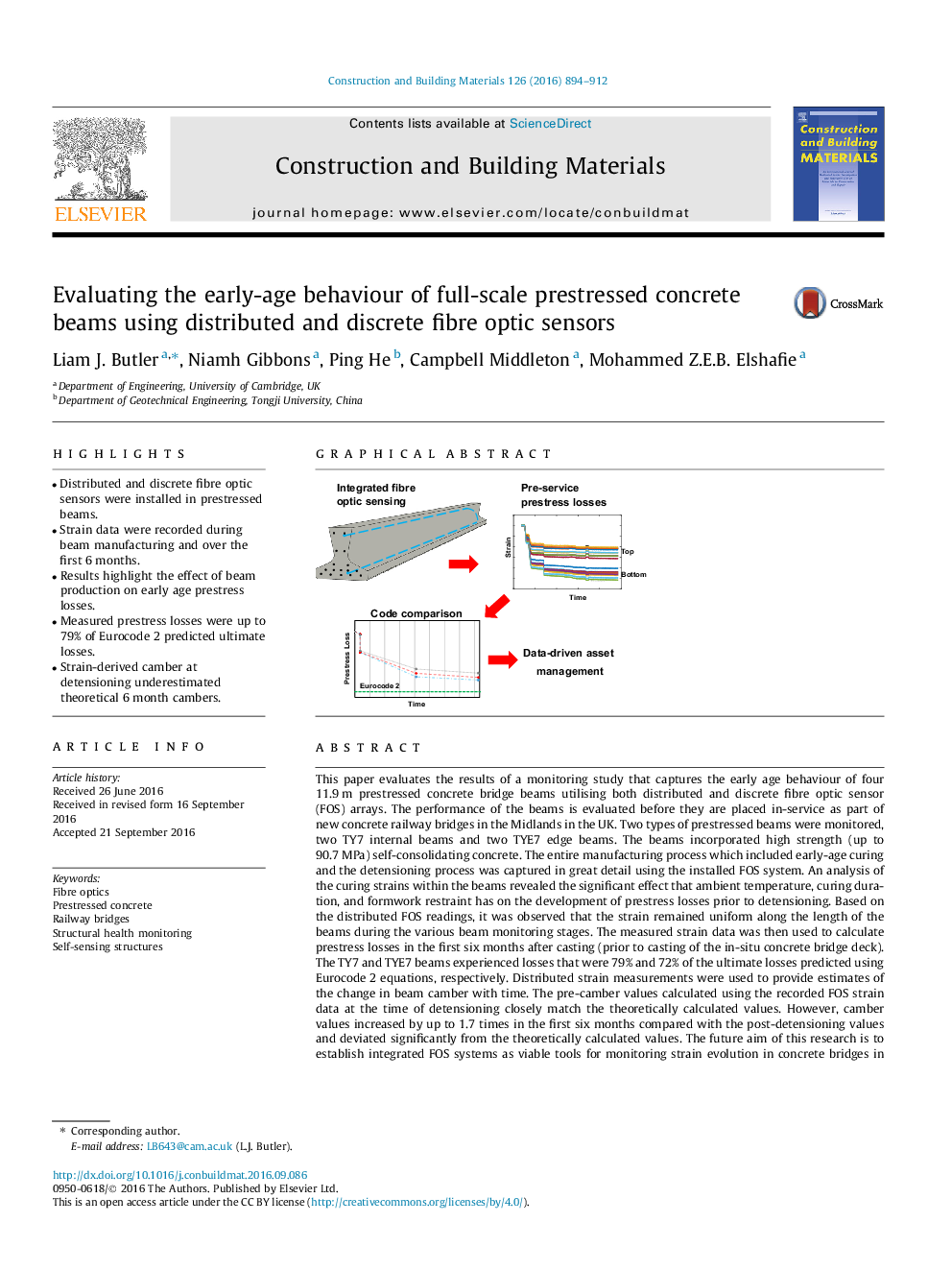| کد مقاله | کد نشریه | سال انتشار | مقاله انگلیسی | نسخه تمام متن |
|---|---|---|---|---|
| 6481000 | 1428780 | 2016 | 19 صفحه PDF | دانلود رایگان |
- Distributed and discrete fibre optic sensors were installed in prestressed beams.
- Strain data were recorded during beam manufacturing and over the first 6Â months.
- Results highlight the effect of beam production on early age prestress losses.
- Measured prestress losses were up to 79% of Eurocode 2 predicted ultimate losses.
- Strain-derived camber at detensioning underestimated theoretical 6Â month cambers.
This paper evaluates the results of a monitoring study that captures the early age behaviour of four 11.9Â m prestressed concrete bridge beams utilising both distributed and discrete fibre optic sensor (FOS) arrays. The performance of the beams is evaluated before they are placed in-service as part of new concrete railway bridges in the Midlands in the UK. Two types of prestressed beams were monitored, two TY7 internal beams and two TYE7 edge beams. The beams incorporated high strength (up to 90.7Â MPa) self-consolidating concrete. The entire manufacturing process which included early-age curing and the detensioning process was captured in great detail using the installed FOS system. An analysis of the curing strains within the beams revealed the significant effect that ambient temperature, curing duration, and formwork restraint has on the development of prestress losses prior to detensioning. Based on the distributed FOS readings, it was observed that the strain remained uniform along the length of the beams during the various beam monitoring stages. The measured strain data was then used to calculate prestress losses in the first six months after casting (prior to casting of the in-situ concrete bridge deck). The TY7 and TYE7 beams experienced losses that were 79% and 72% of the ultimate losses predicted using Eurocode 2 equations, respectively. Distributed strain measurements were used to provide estimates of the change in beam camber with time. The pre-camber values calculated using the recorded FOS strain data at the time of detensioning closely match the theoretically calculated values. However, camber values increased by up to 1.7 times in the first six months compared with the post-detensioning values and deviated significantly from the theoretically calculated values. The future aim of this research is to establish integrated FOS systems as viable tools for monitoring strain evolution in concrete bridges in order to establish comprehensive baselines to facilitate long term data-driven bridge monitoring programmes.
132
Journal: Construction and Building Materials - Volume 126, 15 November 2016, Pages 894-912
